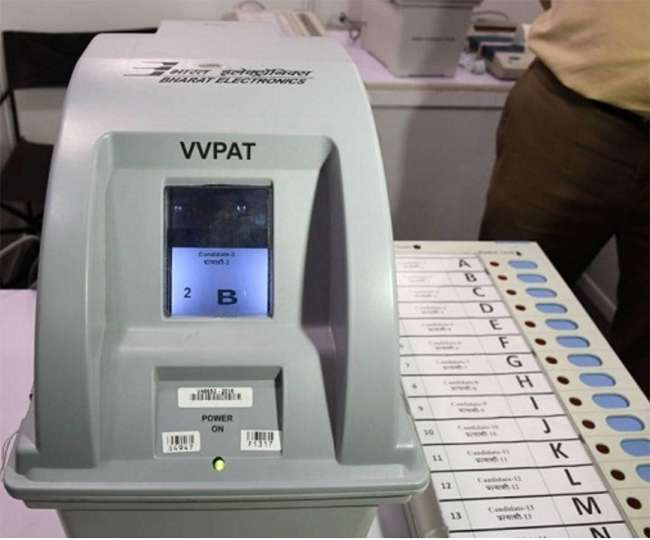Governance
VVPAT Machines
- 27 Apr 2023
- 6 min read
For Prelims: ECI, VVPAT, Remote Electronic Voting Machine, Model Code of Conduct
For Mains: Challenges facing the VVPAT system in Indian elections, potential solutions for ensuring the reliability and transparency of the VVPAT system in future elections, VVPAT and Free and Fair Elections.
Why in News?
The Election Commission of India was criticized for not being transparent and keeping political parties out of the loop regarding defects in the Voter Verified Paper Audit Trail (VVPAT) machines.
What is the Criticism against the Election Commission (EC)?
- The EC has not informed political parties about the identification of 6.5 lakh VVPAT machines as defective.
- The number of machines in which defects have been found is more than 1/3rd (37%) the number used in the 2019 Lok Sabha election and could have affected voters in the last general election and subsequent Assembly poll.
- Thousands of VVPATs with consecutive serial numbers in entire batches from different manufacturers have been found defective.
- The defects are serious enough that the machines have been returned to the manufacturers.
- The EC did not follow standard operating procedures (Model Code of Conduct) that the panel had framed for itself, which requires field officers to identify defects, and any faults to be identified within 7 days.
- EC needs to restore public faith and trust in the electoral process by being transparent.
What are VVPAT Machines?
- About:
- VVPAT is an independent verification printer machine attached to electronic voting machines (EVMs) that allows voters to verify that their votes have been recorded accurately.
- As soon as the voter presses the button on the EVM, the VVPAT machine prints the slip that contains the name and symbol of the party they have voted for, for around 7 seconds.
- VVPAT Machines were first introduced in India in the 2014 Lok Sabha elections and were introduced to increase transparency and eliminate doubts about the accuracy of the EVMs.
- VVPAT machines can be accessed by polling officers only.
- According to ECI, EVMs and VVPATs are separate entities and are not connected to any network.
- VVPAT is an independent verification printer machine attached to electronic voting machines (EVMs) that allows voters to verify that their votes have been recorded accurately.
- Challenges:
- Technical Malfunctions:
- One of the primary concerns with VVPAT machines is the possibility of technical malfunctions. The machines are supposed to print a paper receipt of the vote cast by the voter, which is then deposited in a box.
- However, there have been instances of the machines malfunctioning, resulting in inaccurate printing or no printing at all.
- Verification of Paper Trails:
- Another challenge is the verification of the paper trails generated by the VVPAT machines.
- While the machines are meant to provide a physical record of the vote cast, it is not always clear how this record can be verified, especially in cases where there is a discrepancy between the electronic and paper records.
- Another challenge is the verification of the paper trails generated by the VVPAT machines.
- Voter Confidence:
- The recent reports of defective VVPAT machines have further eroded the public's confidence in the electoral process.
- The lack of transparency and accountability on the part of the EC has led to questions about the fairness and accuracy of the elections.
- The SC in Dr. Subramanian Swamy v ECI (2013) held that VVPAT is an "indispensable requirement of free and fair elections".
- Technical Malfunctions:
Way Forward
- Regular Maintenance:
- One way to address the issue of technical malfunctions is to ensure regular maintenance of the machines. The EC should establish a system of routine maintenance and testing to identify and address any defects in a timely manner.
- Increased Transparency:
- To address concerns about the verification of paper trails, the EC should increase transparency in the electoral process. This can be achieved by providing more information to political parties and the public about the functioning of the VVPAT machines and the process of verification.
- Accountability:
- The EC should take responsibility for the defective VVPAT machines and take steps to ensure that such incidents do not occur in the future.
- This can be achieved by instituting a system of accountability for those responsible for maintaining and testing the machines.
- The EC should take responsibility for the defective VVPAT machines and take steps to ensure that such incidents do not occur in the future.
- Research and Development:
- Finally, there is a need for ongoing research and development in the field of electronic voting. New technologies and innovations should be explored to improve the accuracy, security, and transparency of the electoral process.
UPSC Civil Services Examination, Previous Year Question (PYQ)
Mains
Q. In the light of recent controversy regarding the use of Electronic Voting Machines (EVM), what are the challenges before the Election Commission of India to ensure the trustworthiness of elections in India? (2018)







